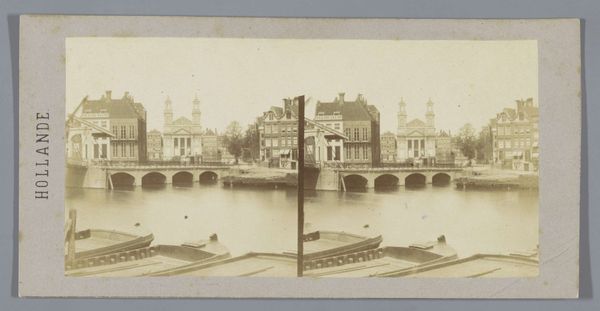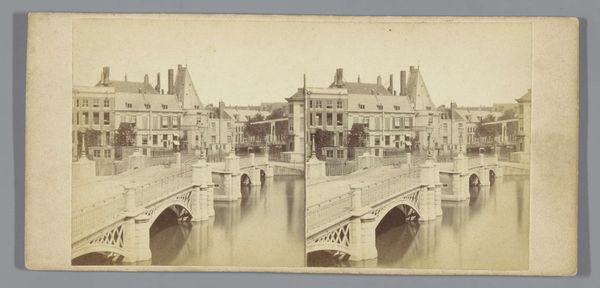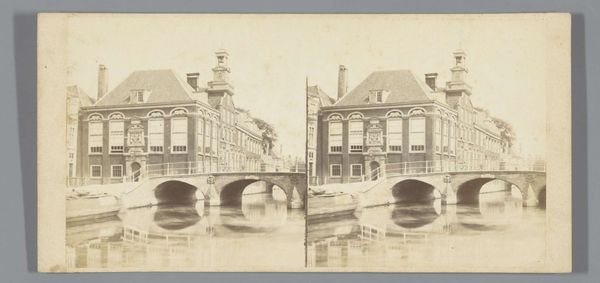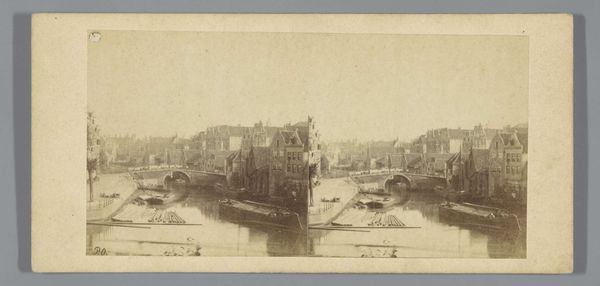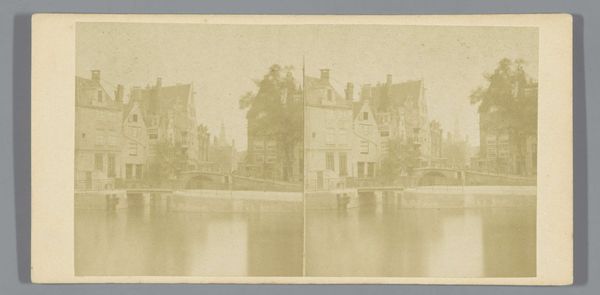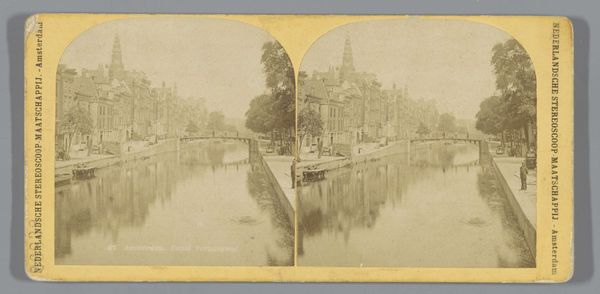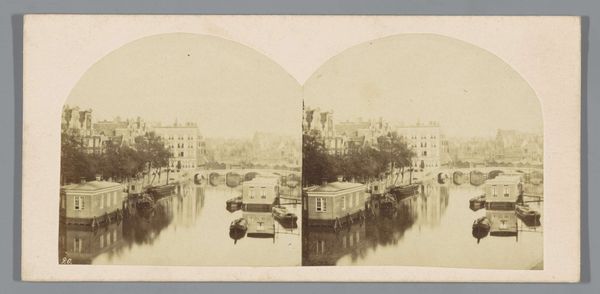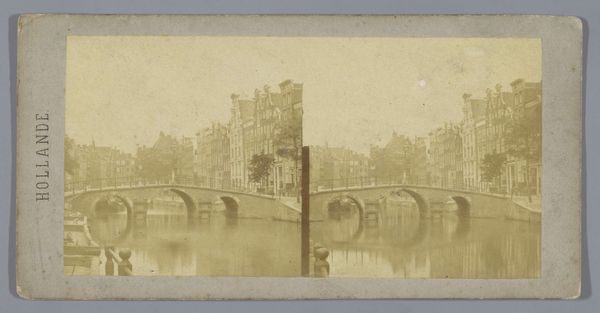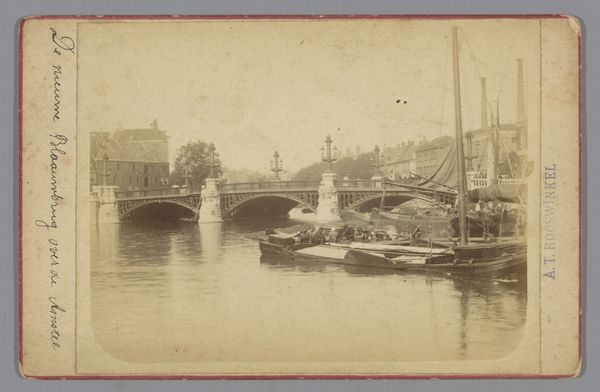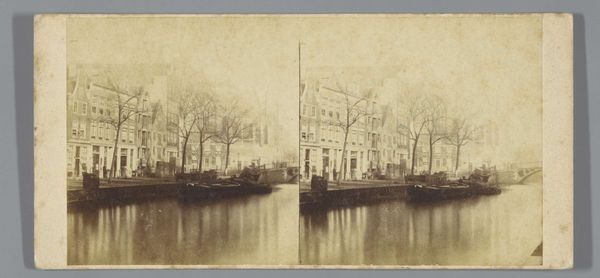
photography
#
landscape
#
photography
#
coloured pencil
#
cityscape
#
realism
Dimensions: height 83 mm, width 173 mm
Copyright: Rijks Museum: Open Domain
Curator: Looking at this stereo card, what comes to mind? Editor: It’s melancholy, almost ghostly. The light, a bit hazy, gives everything a kind of faded glory. It evokes a world slightly out of reach. What can you tell me about it? Curator: This is a stereo card from between 1855 and 1865, showcasing the Mozes en Aäronkerk in Amsterdam by Pieter Oosterhuis, held here at the Rijksmuseum. The medium is photography, of course, though it almost resembles a tinted drawing at first glance, doesn't it? Editor: Absolutely! The tones create a sense of uniformity, almost as if reality were softened to highlight the urban landscape. Thinking about that church, in the old Jewish Quarter… I’m curious about the societal context then. Amsterdam as this center, of tolerance and refuge but also of its own kinds of exclusion? Curator: Oosterhuis beautifully captures the serene cityscape, but the image also carries an undeniable tension, hinting at untold stories of its inhabitants from a complex time. And yes, it also feels deeply, delicately composed; the way the water mirrors the buildings creates an otherworldly effect. Like a reversed reality resting just below the surface. Editor: Precisely. It also strikes me that while we see architectural beauty, the people are essentially absent. Is it intentional, that erasure, or just the limitations of early photography? We can never know completely the original intention… Curator: The stillness, whether intentional or circumstantial, allows the structures to speak for themselves, evoking a certain historical gravitas, though the absence of movement also invites projection, contemplation. The reflections invite us to peer deeper, to consider the multi-layered story. What does this image tell you about the relationship with memory, perception and the ever-evolving face of the city? Editor: Indeed, in an urban landscape defined by continuous development and change, Oosterhuis immortalizes a moment, a feeling... This piece definitely sparks reflection, on lost history and the subjective way in which we experience a place.
Comments
No comments
Be the first to comment and join the conversation on the ultimate creative platform.
